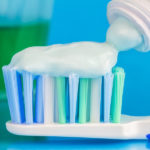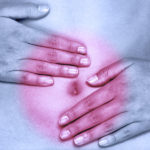By Bonnie Jenkins, Advanced Natural Wellness
Every time we go outside, we face one of life’s unfortunate ironies: That beautiful bright sunshine we love has a nasty habit of exacting revenge on us if we overindulge.
On one hand, exposure to sunlight is the primary way we get essential vitamin D. It’s so important that a recent study by researchers at Stanford University School of Medicine showed that when ultraviolet light triggers vitamin D synthesis, it causes immune cells to travel to the outer layers of the skin where they can help repair cellular damage.
On the flip side, soaking up too many rays can lead to skin cancer. In fact, according to the Skin Cancer Foundation, one in five Americans will develop skin cancer at some point in their lives – and 90 percent of those cases can be traced directly to sun exposure. Harmful UV rays also accelerate skin aging because they trigger the formation of free radicals. Left unchecked, these free radicals damage the DNA of skin cells and cause the breakdown of collagen and elastin (the connective fibers that give skin its elasticity and firmness).
So what’s a health-minded sun lover to do?
The Protection Racket
It’s important to shield your skin to save it from both cancer and the premature signs of aging – and that means sunscreen. But before you grab just any old sunscreen, take a good long look at the ingredient label. Most sunscreens rely on a combination of chemicals to provide broad-spectrum protection against the sun’s harmful rays. But these ingredients also have a dark side.
Open your arteries, improve blood flow for a new health miracle...
Did you know your circulatory system has over 60,000 miles of arteries, veins and other blood vessels, if stretched end to end?
But as you age, your blood vessels undergo changes, which may cause them to stiffen, thicken and get clogged.
GOOD NEWS! Doctors have now identified a “Miracle Molecule” inside your arteries that helps OPEN your arteries and IMPROVE blood flow.
It’s what Dr. Valentin Fuster calls it, "One of the most important discoveries in the history of cardiovascular medicine."To you, that means...
- Healthy blood pressure
- Sharper mind and memory
- Skyrocketing energy and muscular strength
- Increased pleasure and passion in the bedroom
- Improved circulation to every cell and organ in your body
Go here to discover a new natural way to significantly boost the levels of this miracle molecule in YOUR body NOW!
Studies show that benzophenone, octyl-methoxycinnamate and octyl-dimethyl-PABA, mimic the effects of estrogen and trigger developmental abnormalities. Avobenzone offers protection against UVA rays, but it also forms free radicals when exposed to UV radiation. And Padimate-O damages DNA when exposed to sunlight.
For safer protection, seek out mineral-based sunscreens that divert UV rays away from the skin. The two most common physical blockers are titanium dioxide and zinc oxide. But even these two natural minerals can have a downside. Since both titanium dioxide and zinc oxide have a white, opaque quality, sunscreen manufacturers are using nanotechnology to create particles so tiny they can’t be seen on the skin. The problem is that these nanoparticles (known as buckyballs) can penetrate the skin and find their way into the lymphatic system.
More frightening, new research from the University of Calgary has found that these buckyballs are easily absorbed into cells where they can cause damage. Other research shows that they can cross the blood-brain barrier – which raises a lot of questions about their toxicity.
The ABCs of SPFs
When reading sunscreen labels, you also need to pay attention to the sun-protection factor, typically listed as SPF plus a number. A product with an SPF 15 will block about 93 percent of UVB rays (the ones that cause tanning and burning). SPF 30 will block about 97 percent, and even lotions with an SPF of 50 or higher probably block no more than 99 percent. Those higher numbers may also mean that the product contains a higher concentration of harmful chemicals.
The other caveat? SPF only refers to the amount of protection against UVB rays. While ample proof exists that UVA rays do just as much damage to skin – causing signs of premature aging as well as raising the risk of skin cancer – knowing exactly how much protection you’re getting from UVA rays remains elusive. Hedge your bets by looking for a mineral-based sunscreen that naturally provides “broad spectrum” protection by filtering out both UVA and UVB rays.
Shining The Light On Supplements
Now that you’ve taken care of the outside, how about guarding against sun damage from the inside? The supplemental nutrients listed below can help save your hide by neutralizing damaging free radicals created by UV rays. But don’t limit yourself to just one. Taking a combination of antioxidants is even more effective since each functions a bit differently.
Are You Suffering From...
- Love handles and a pot belly
- Romance that isn't what it used to
- Forgetfulness and inattention
- Low (or no) strength and endurance
- A sex drive that's shifted into neutral...or worse
If so...you may have Mature Male Burnout. Click here to discover more about this unique condition and what you can do about it.
Pomegranate: Flavonoids give this plant its dazzling crimson color and also pack it with more antioxidant power than blueberries or red wine. In one study, pomegranate peel, juice and seed oil stimulated the production of collagen (the skin’s support system) and promoted the growth of skin cells, aiding in skin regeneration. Pomegranate extract also helps prevent skin cancer and inhibits the inflammatory process that leads to sunburn. For best results, take 500 to 1,000 mg. of pomegranate extract daily.
Green tea:Tea leaves are rich in polyphenols that help prevent sunburn, sun-related skin aging and skin cancer by suppressing inflammation and preventing DNA damage Drink about 4 cups of white or green tea daily for skin-protective benefits, or consider taking a supplement rich in tea polyphenols like epicatechin gallate (EGCG). For optimum sun protection, look for a standardized green tea extract and take 300 to 400 mg. per day.
Alpha-Lipoic Acid (ALA): A potent anti-inflammatory agent, ALA protects cells from free radical damage, improves collagen production, and reduces the appearance of fine lines and wrinkles. Taken internally, it also regenerates skin-friendly vitamins C and E. While there isn’t an established amount for supplementation, the recommended dose of ALA is 20 mg. to 50 mg. per day.
One Last Thing . . .
How you apply sunscreen is just as important as what you apply. According to the recommendations of the Skin Cancer Foundation, you need to apply a full ounce of sunscreen to protect your entire body adequately – and you need to put it on about 30 minutes before heading outdoors so the ingredients can bind with your skin. For a day outdoors, reapply about every two hours – more often if you take frequent dips or sweat profusely.
If sunscreen is too much of a hassle or if you can’t find a truly natural brand, try sun-protective clothing. Several companies have devised hats, clothing and even swimwear made with titanium dioxide–containing microfibers that diffuse up to 98 percent of UV rays. You can also add UV protection to the clothes you have with a protective laundry additive called SunGuard. You simply wash your clothes with it to infuse the fabric with a UV-blocking agent equivalent to SPF 30.
This just in . . .
We all know that trans fats aren’t good for you. In fact they are the worst type of fat in terms of heart health. But now there’s another reason to check food labels for hidden trans fat – especially if you’re a woman.
It seems that women with high blood levels of trans fats are at much greater risk for breast cancer than women with low blood levels of the unhealthy fat. Those were the findings of researchers with the European Prospective Investigation into Cancer and Nutrition, who analyzed blood for trans fatty acids in 17,540 French women, aged 40 to 65 and tracked who developed breast cancer and who didn’t over the next seven years.
The researchers found that women with the highest trans fat levels were 75 percent more likely to develop breast cancer compared to those with the lowest levels. So what foods are likely to contain trans fats? Cookies, crackers and bakery goods are among the worst culprits. But don’t be fooled by nutrition labels claiming zero trans fats.
According to the FDA, these products can contain up to 0.5 percent trans fat without telling consumers. Look instead at the ingredient label for hydrogenated or partially hydrogenated oils. If you find them, put the food back on the shelf!
References:
Alvarez S, Boveris A. “Antioxidant adaptive response of human mononuclear cells to UV-B: effect of lipoic acid.” Journal of Photochemistry and Photobiology B. 2000;55:113-119.
Bae JY, Choi JS, Choi YJ, et al. “(-)Epigallocatechin gallate hampers collagen destruction and collagenase activation in ultraviolet-B-irradiated human dermal fibroblasts: involvement of mitogen-activated protein kinase.” Food and Chemical Toxicology. 2008;46:1298-1307.
Chajès V, Thiébaut ACM, Rotival M, et al. “Association between Serum trans-Monounsaturated Fatty Acids and Breast Cancer Risk in the E3N-EPIC Study.” American Journal of Epidemiology. 2008; 167: 1312–1320.
Kasai K, Yoshimura M, Koga T, et al. “Effects of oral administration of ellagic acid-rich pomegranate extract on ultraviolet-induced pigmentation in the human skin.” Journal of Nutritional Science and Vitaminology. 2006;52:383-388.
“Nanotechnology Safety and How Buckyballs Invade Cells.” The A to Z of Nanotechnology. www.azonano.com.
Schlumpf M, Cotton B, Conscience M, et al. “In vitro and in vivo estrogenicity of UV sunscreens.” Environmental Health Perspectives. 2001;109:239-244






